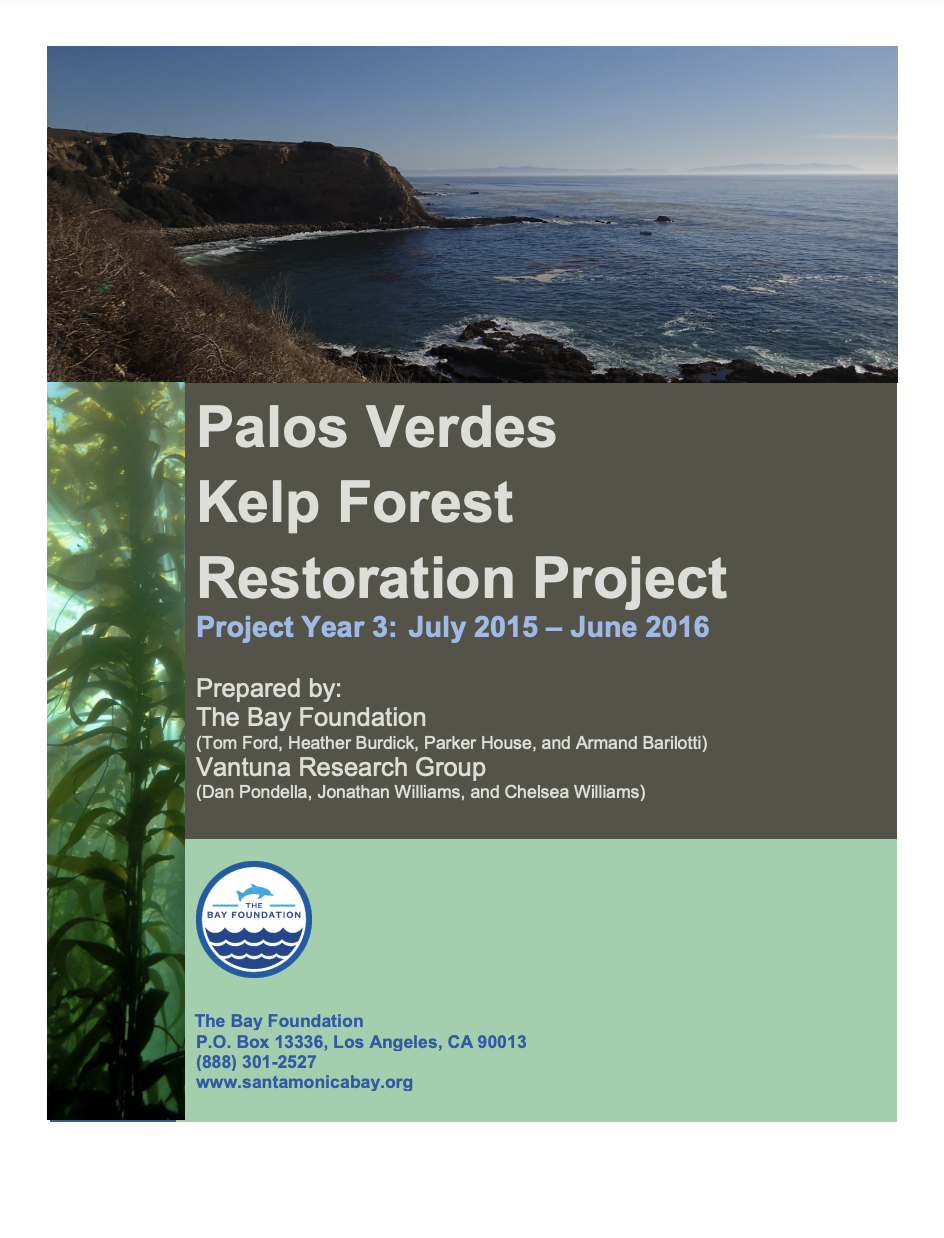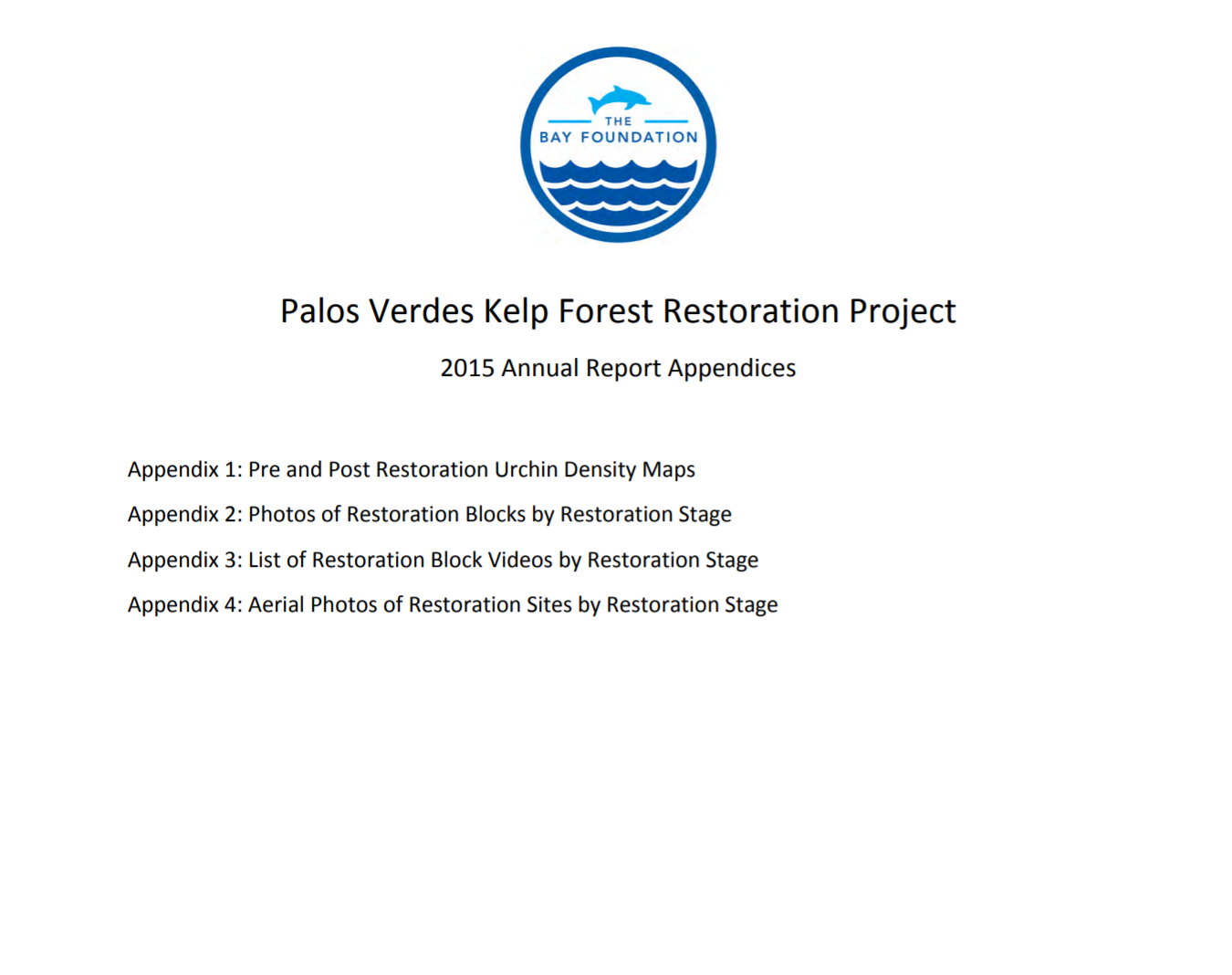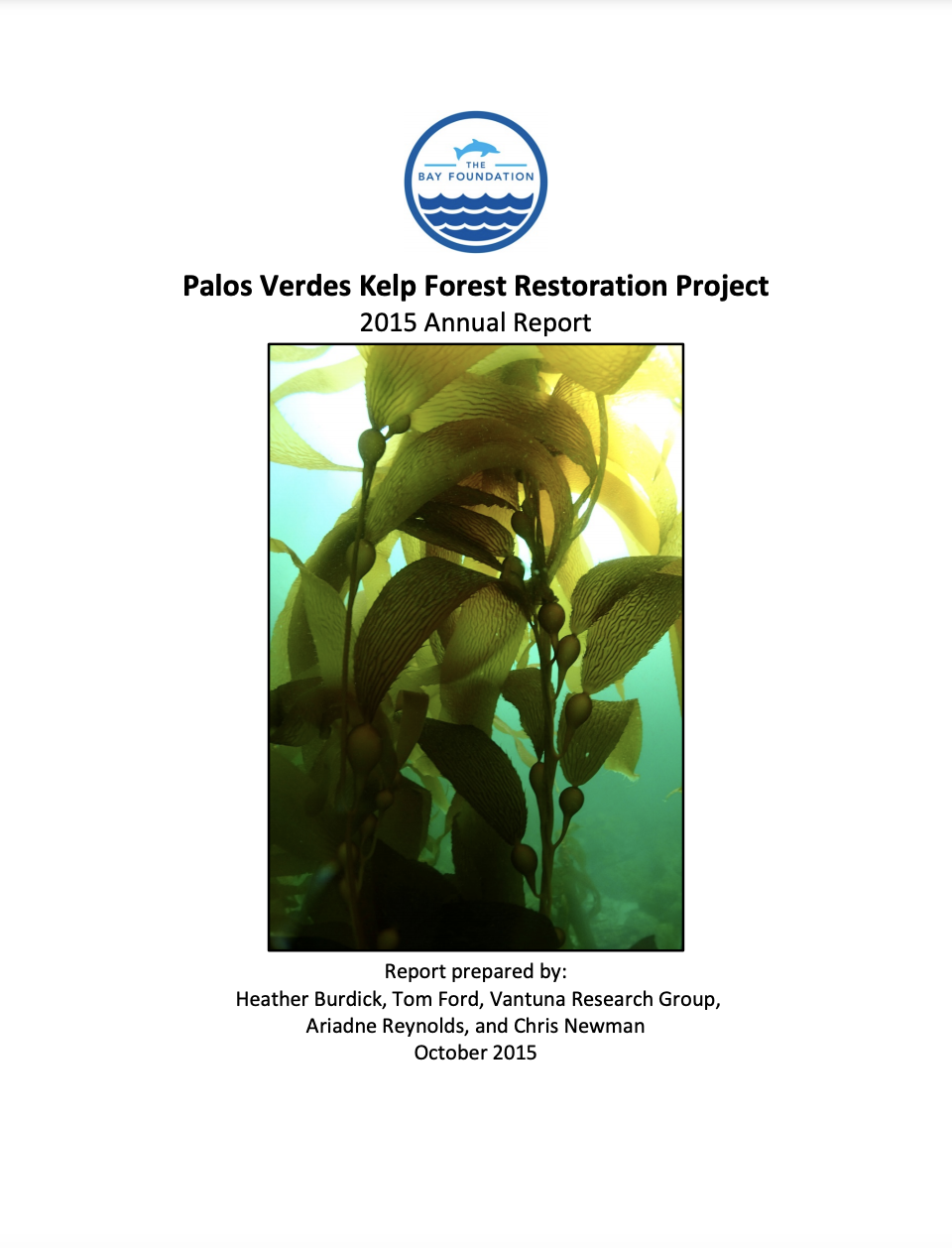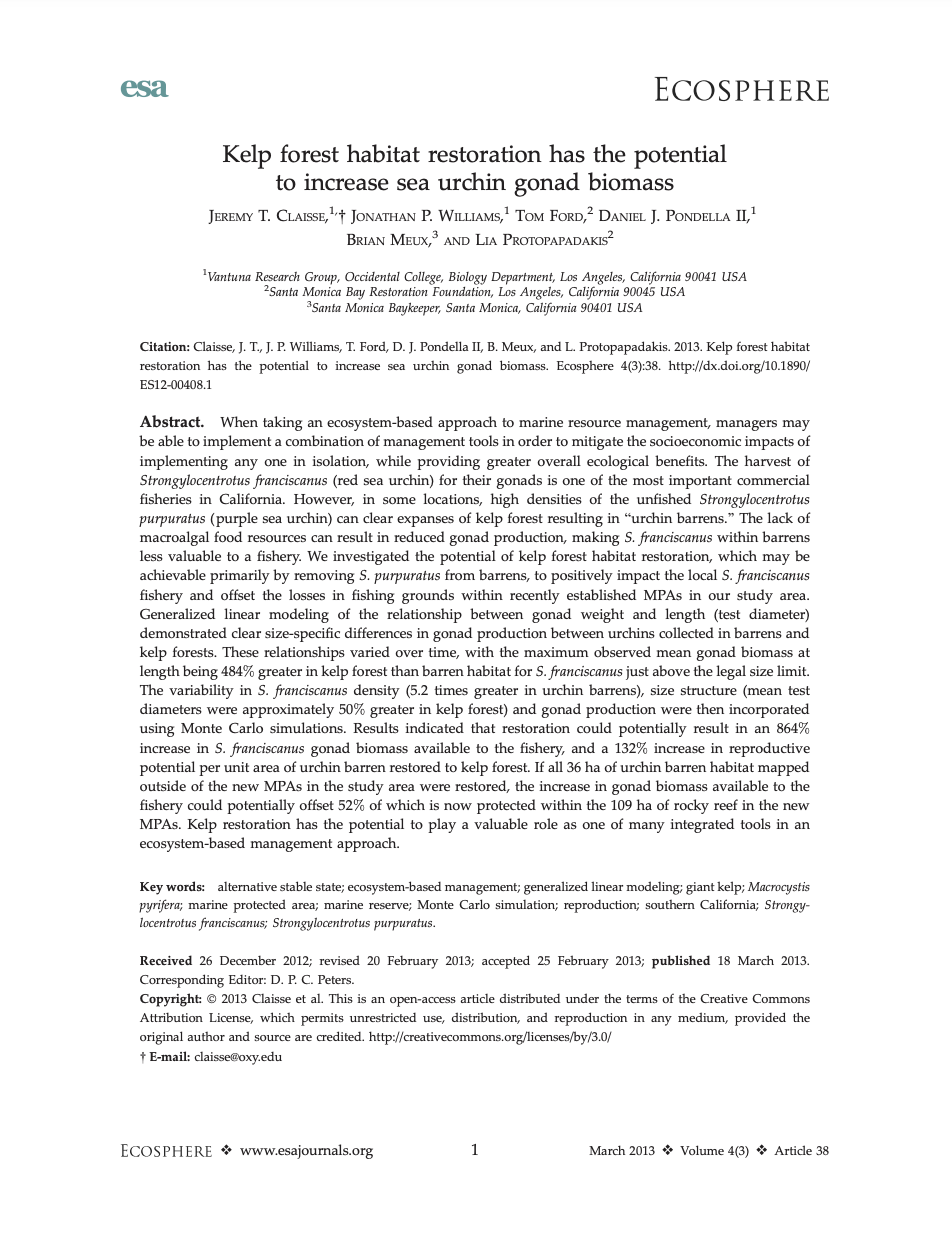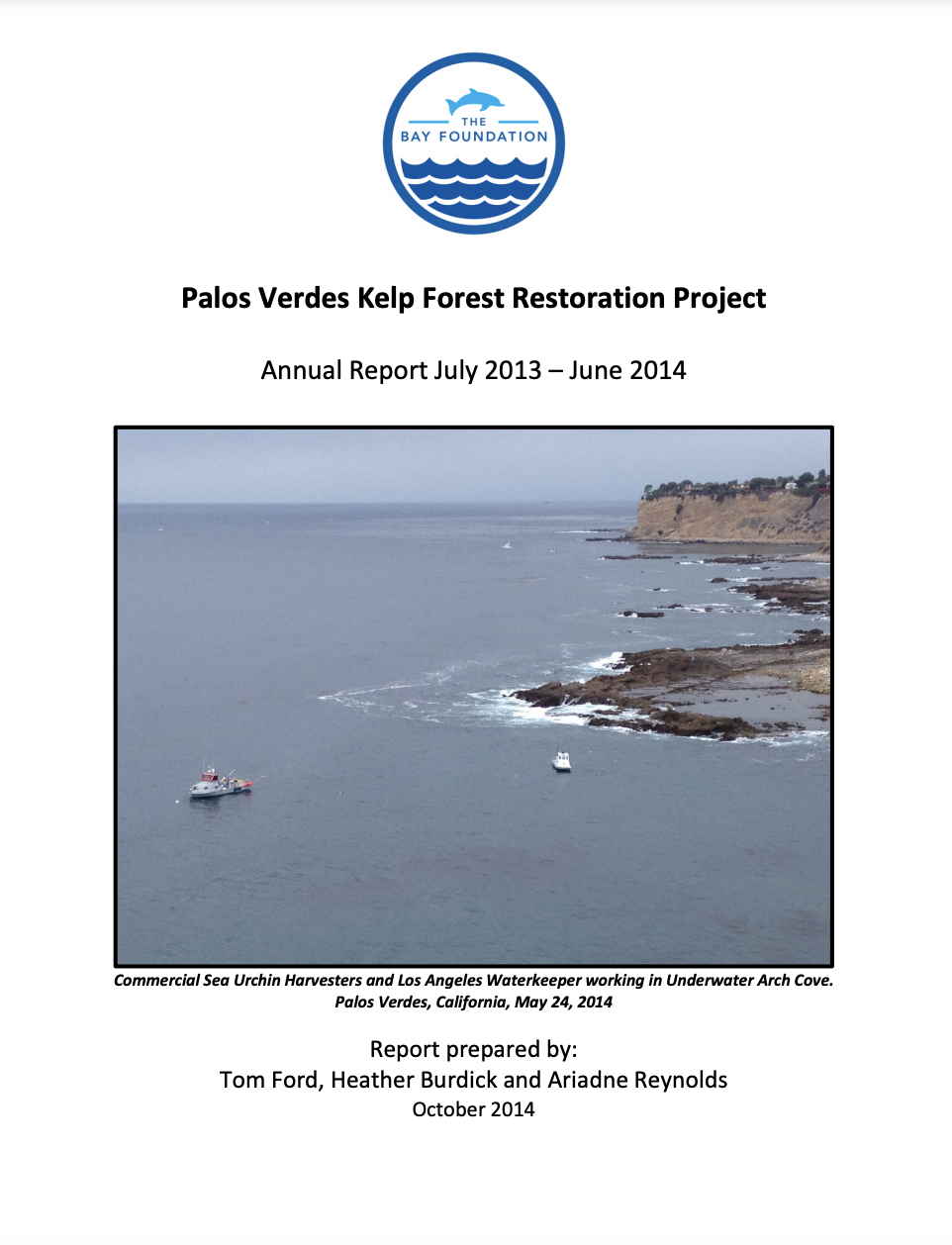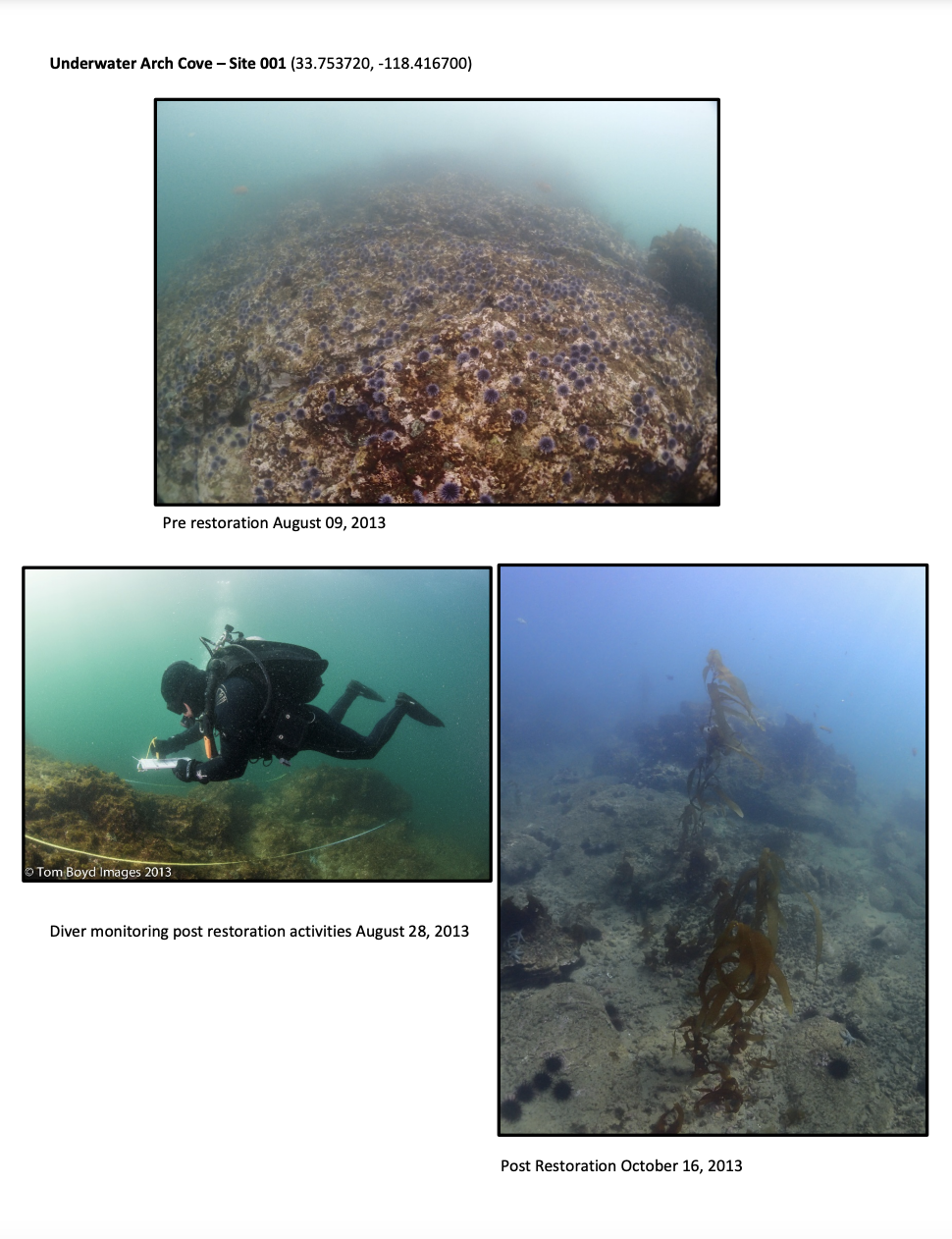Kelp forest ecosystems are iconic and productive features along the coast of California with services that span a wide array of consumptive (e.g., commercial and recreational fishing) and non-consumptive (e.g., tourism, scuba diving and coastal protection) uses. This publication provides a Year 3 update on the Palos Verdes Kelp Forest Restoration Project.
Topic: Kelp
Kelp Forest Restoration Annual Report July 2014 – June 2015 (Year 2) – Appendices
Appendices to Year 2 Annual Report including project maps, photos and additional data.
Kelp Forest Restoration Annual Report July 2014 – June 2015 (Year 2)
This project developed from an interest in the protection and preservation of giant kelp communities in the Southern California Bight. 2015 Annual Report for the Palos Verdes Kelp Forest Restoration Project.
Kelp Forest Habitat Restoration Has The Potential To Increase Sea Urchin Gonad Biomass
(Abstract) When taking an ecosystem-based approach to marine resource management, managers may be able to implement a combination of management tools in order to mitigate the socioeconomic impacts of implementing any one in isolation, while providing greater overall ecological benefits. The harvest of Strongylocentrotus franciscanus (red sea urchin) for their gonads is one of the… Continue reading Kelp Forest Habitat Restoration Has The Potential To Increase Sea Urchin Gonad Biomass
Kelp Forest Restoration Annual Report July 2013 – June 2014 (Year 1)
This project developed from an interest in the protection and preservation of giant kelp communities in the Southern California Bight. July 2013 – June 2014 Annual Report for the Palos Verdes Kelp Forest Restoration Project.
Kelp Forest Restoration Annual Report July 2013 – June 2014 (Year 1) – Appendices
Pre- and Post-Restoration images and maps (Underwater Arch Cove and Honeymoon Cove).
Kelp Forest Hydrodynamics
Frequent storms and larger waves pounding the Southern California coastline are major causes for concern if we hope to preserve our beaches and rocky shorelines for future generations to enjoy. The Bay Foundation (TBF) spearheaded a study to investigate how we can protect our shorelines using kelp forest restoration techniques. A variety of tools are… Continue reading Kelp Forest Hydrodynamics
Kelp Forest Restoration Project
The kelp forest ecosystems off the southern California coast are known to be some of the most diverse and productive ecosystems in the world. They are vital for providing habitat and food for over 700 marine species, including kelp bass, California spiny lobster, abalones, marine mammals, birds, and fish. Many of these kelp forest species… Continue reading Kelp Forest Restoration Project
